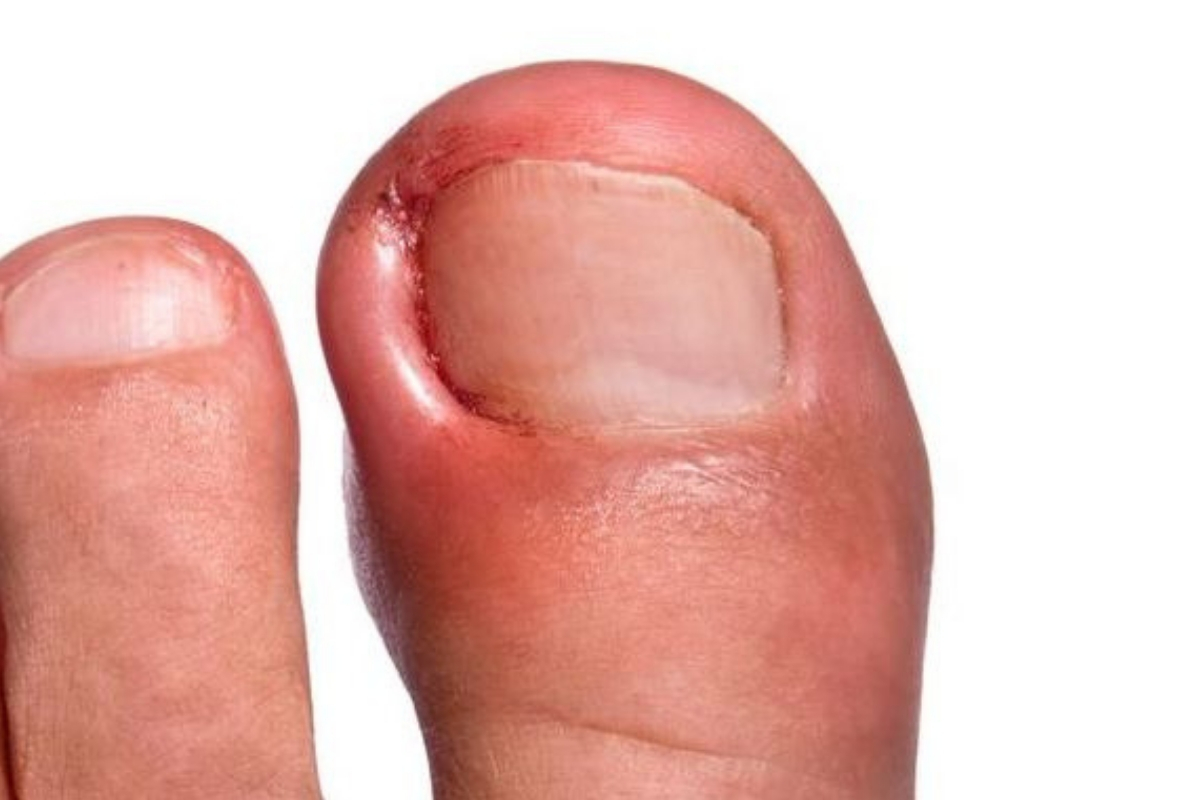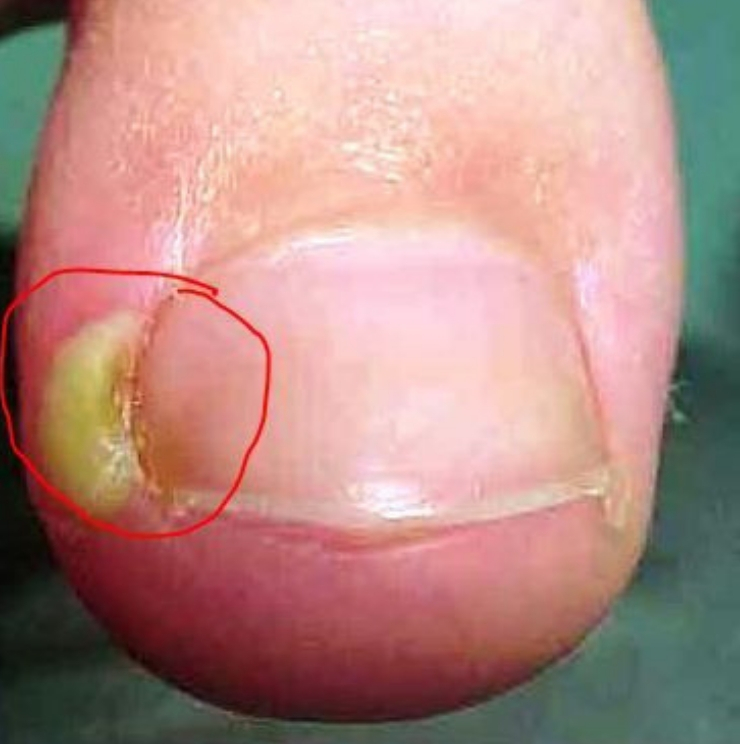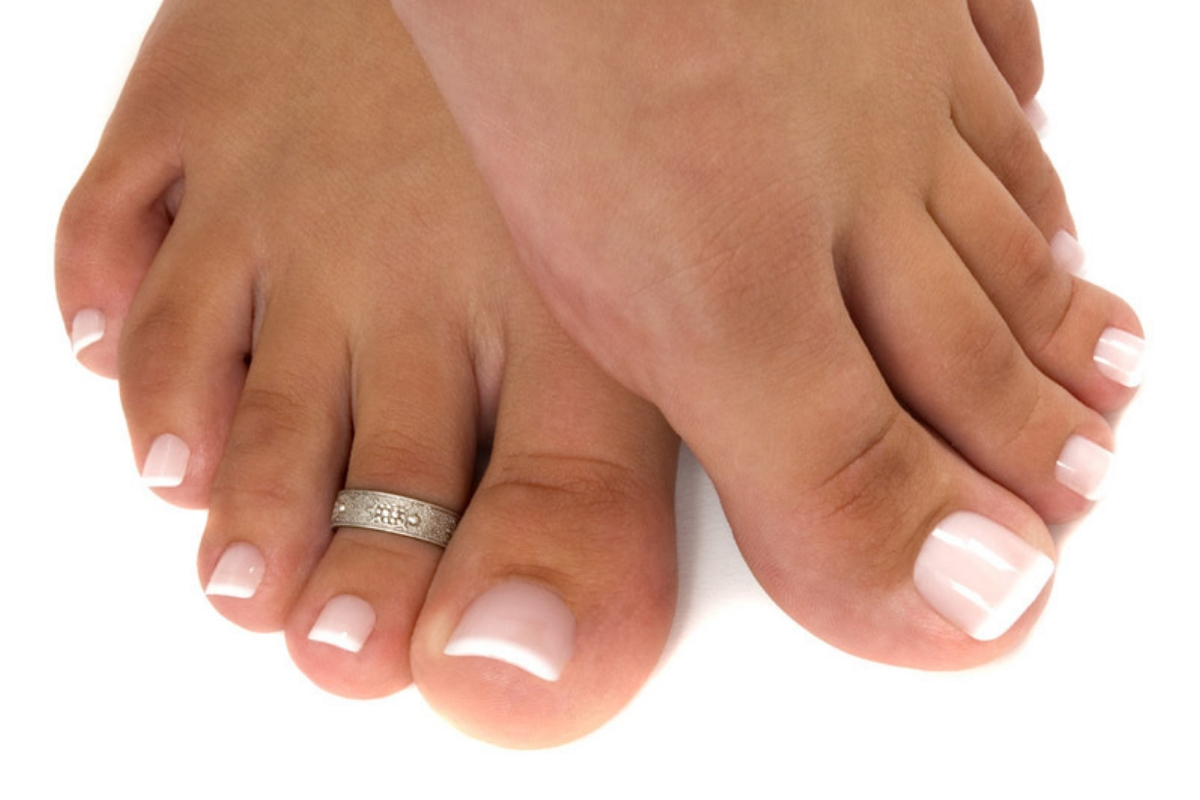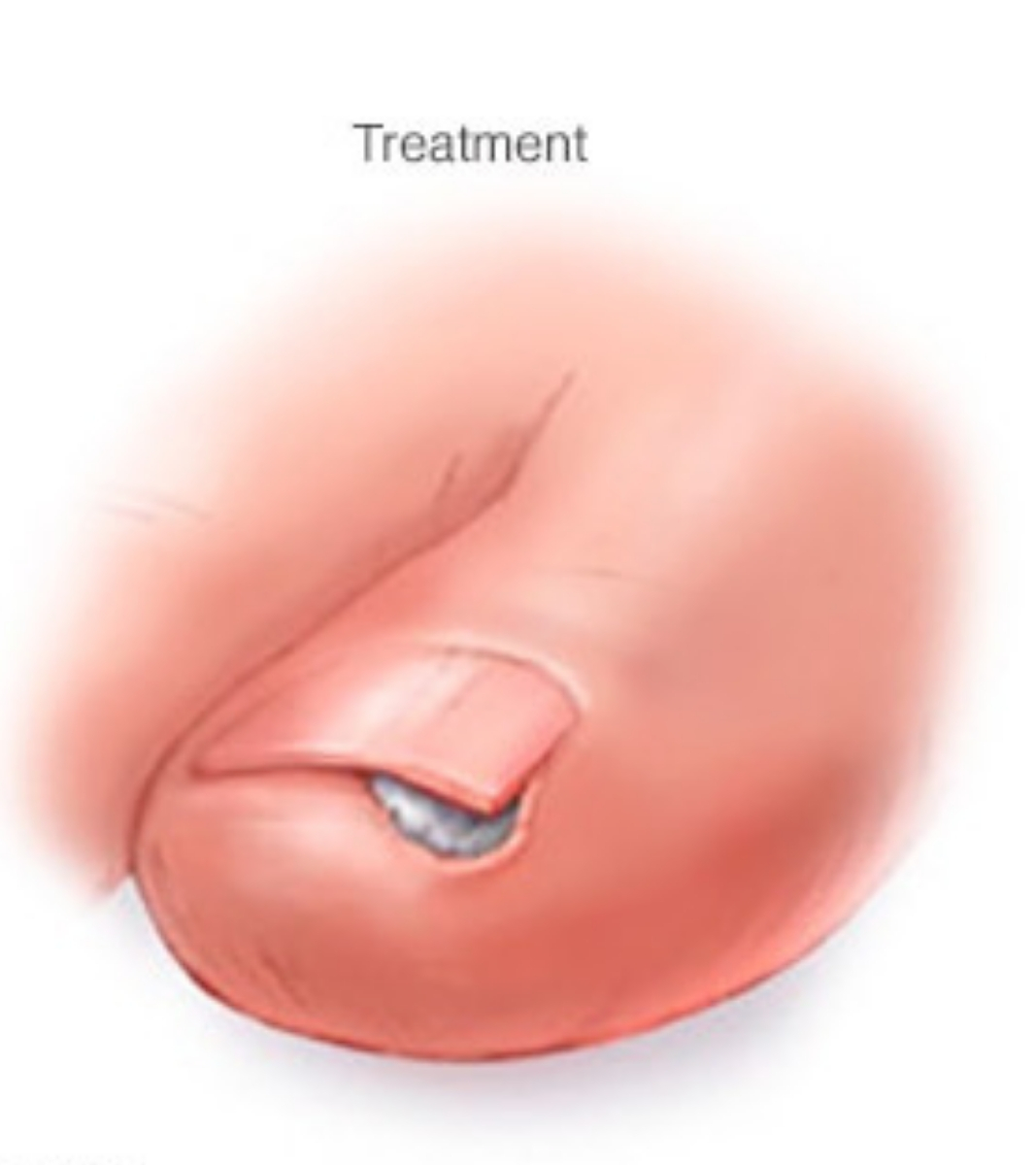Do you require any assistance? Simply reserve your appointment online below
Ingrown toenail
Eliminate recurring foot problems
Ingrown toenail
An ingrown toenail is a common condition typically affecting the great toe, in which the corner or side of the nail becomes incurvated (turned inward) and grows into the skin and soft flesh of the toe. This often causes pain, redness, warmth and swelling.
Foot care is important. An ingrown toenail is a condition that can bring discomfort, irritation of the surrounding tissue, and possible infection. Ingrown toenail specialist in Kenya at NSOC in Nairobi and the team of physicians provide treatment for ingrown toenails.

Ingrown Toenail Symptoms

The big toe is often affected, either on one or both sides. Possible symptoms include:
pain if pressure is placed on the toe.
a build-up of fluid in the area surrounding the toe
an overgrowth of skin around the affected toe
- white or yellow pus coming from the affected area
Inflammation of the skin at the end of the toe
What causes ingrown toenails?
Common causes of ingrown toenails include the following:
- Genetic inheritance for incurvated toenails and/ or thickened soft tissue surrounding nail borders.
- Injuring your toenail
- Improper trimming of your nails too short or not straight across.
- Wearing tight shoes and/or socks that crowd your toenails
- Nail conditions such as fungal infections.
What complications can an ingrown toenail cause?
Early and mild ingrown nails are slightly painful and red. More severe cases result in red, swollen nail borders, which may lead to the formation of yellow purulent discharge from the affected area.
Left untreated or undetected, an ingrown toenail can infect the underlying bone and lead to a serious bone infection which may require intravenous antibiotics and surgery.

How can you prevent an ingrown toenail?

Wear shoes that fit properly. Shoes that place too much pressure on your toes or pinch them may cause a nail to grow into surrounding tissue.
Keep toenails at a moderate length. Trim toenails so they’re even with the tips of your toes. If you trim your toenails too short, the pressure from your shoes on your toes may direct a nail to grow into the tissue.
If your work puts you at risk of injuring your toes, wear protective footwear, such as steel-toed shoes.
Expert treatment
Diagnosis and treatment of ingrown toenails
Your foot and ankle surgeon can diagnose an ingrown toenail based on your symptoms and a physical examination of your nail and the surrounding skin.
X-rays of the affected toe will be taken to rule out the presence of gas produced by bacteria that may result in a bone infection.
Treatments for ingrown toenails
If home remedies haven’t helped your ingrown toenail, your doctor may recommend the following to ease your pain and remove the offending nail:


Lifting the nail. For a slightly ingrown nail (redness and pain but no pus), your doctor may carefully lift the ingrowing nail edge and place cotton,or a splint under it. This separates the nail from the overlying skin and helps the nail grow above the skin edge.
Partially removing the nail. For a more severe ingrown toenail (redness, pain and pus), your doctor may trim or remove the ingrown portion of the nail. Before this procedure, your doctor may temporarily numb your toe by injecting it with an anesthetic.
Removing the nail and tissue. If you have the problem repeatedly on the same toe, your doctor may suggest removing a portion of the nail along with the underlying tissue (nail bed). This procedure may prevent that part of your nail from growing back.
